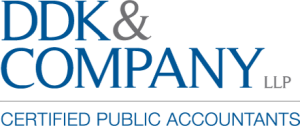
Riding the tax break train: Maximizing employee transportation fringe benefits
There are some nice tax breaks for transportation-related employee fringe benefits. If your employer offers these tax-favored fringes, you should probably take advantage of them by signing up. Here’s a quick summary of the current federal tax treatment of transportation-related benefits.
Mass transit pass
For 2025, employer-provided mass transit passes for train, subway and bus systems are tax-free to a recipient employee up to a monthly limit of $325. Thanks to an unfavorable change in the 2017 Tax Cuts and Jobs Act (TCJA), your company can’t deduct the cost of this benefit. However, your company may offer a salary-reduction arrangement that allows you to set aside up to $325 per month from your salary to pay for transit passes with your own money. That way, you pay for the passes with before-tax dollars.
For example, let’s say you set aside the maximum $325 per month to pay for train passes. If you’re in the 24% federal income tax bracket, you could save $993 a year in federal income and Medicare taxes. If Social Security tax is being withheld from your paychecks, you could save $1,235.
Parking allowances
For 2025, employer-provided parking allowances are also tax-free up to a monthly limit of $325. You can be given this fringe on top of the tax-free $325 a month for transit passes. For example, you can get $325 per month to pay for the train, plus another $325 to pay the park-and-ride fee at the station. Or you can simply drive to work and get $325 in tax-free bucks to help cover parking near your office or worksite.
Van pooling
For 2025, an employer can provide employees with tax-free transportation of up to $325 per month in a commuter highway vehicle if the transportation is for travel between employee residences and the workplace. This arrangement is often called van pooling.
To be a commuter highway vehicle, the vehicle must meet the following conditions:
1. It has a seating capacity of at least six adults (not including the driver),
2. At least 80% of the mileage is reasonably expected to be for transporting employees between their residences and their workplace, and
3. It’s used for such trips during which the number of employees transported is at least 50% of the adult seating capacity (not including the driver).
Your company cannot deduct the cost of this benefit. But as explained earlier, the company may offer a salary-reduction arrangement that allows you to set aside up to $325 per month to cover van pooling. That way, you pay with before-tax dollars, which will cut your tax bill.
Job-related moving expenses
Your company may give employees allowances to cover job-related relocation expenses. Through 2025, the TCJA generally doesn’t allow tax-free treatment for these allowances. The exception is when the employee is on active duty as a member of the U.S. Armed Forces and the move is pursuant to a military order involving a permanent change of station.
While companies can deduct the benefit provided, employees are responsible for the taxable benefit. However, you still come out ahead, as you won’t have to cover the expenses with after-tax dollars. A taxable benefit is better than no benefit at all!
We can help
If your company pays for these tax-free transportation-related fringe benefits, you should strongly consider signing up. Saving on commuting costs can make your trips to work less stressful. Contact a DDK Tax Advisor if you have questions about these benefits or want more information.
